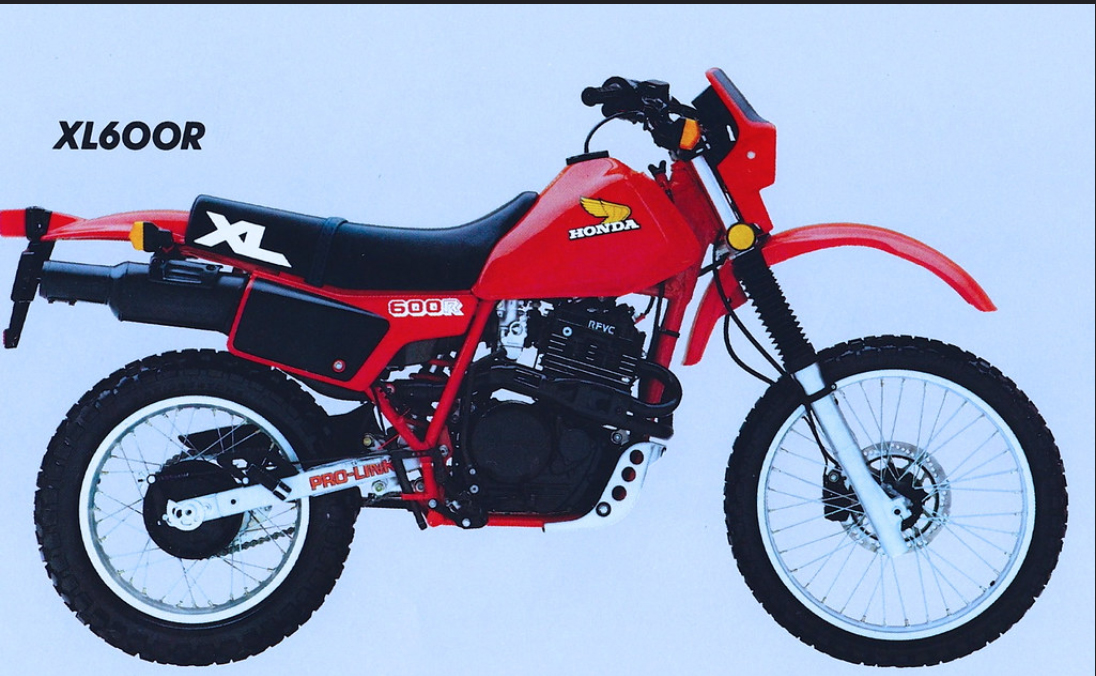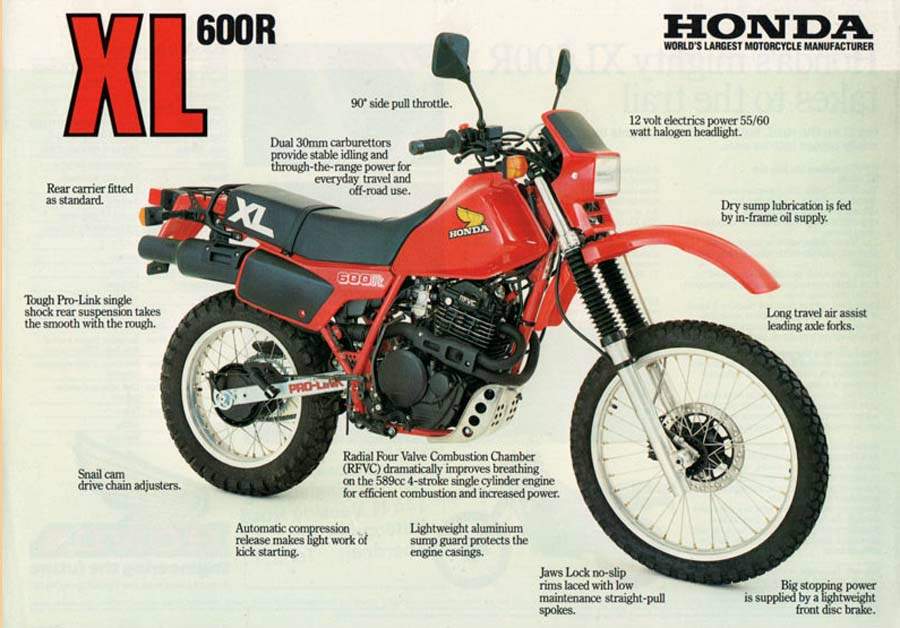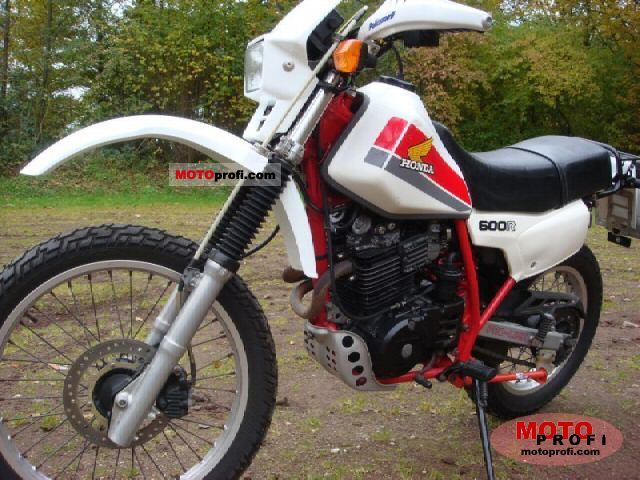The 1984 Honda XL600 Specs That Still Impress: A Look Back at a Dual-Sport Icon
The year was 1984. Ronald Reagan was in the White House, the first Apple Macintosh hit the market, and Honda was busy redefining the dual-sport motorcycle with the introduction of the XL600R. This wasn’t just another motorcycle; it was a machine that blended on-road practicality with off-road prowess, a combination that captivated riders and cemented its place in motorcycling history. Even today, decades later, the 1984 Honda XL600R continues to impress with its robust design and surprisingly capable specifications. This article delves into the key aspects that made this bike a legend and why it remains a sought-after classic.
Engine and Performance: The Heart of a Reliable Adventurer
At the core of the 1984 XL600R’s appeal lies its powerful and dependable engine. This single-cylinder, four-stroke powerhouse delivered a level of performance that was considered impressive for its class and era.
- Engine Type: 589cc, air-cooled, single-cylinder, four-stroke
- Bore and Stroke: 100 mm x 75 mm
- Compression Ratio: 8.8:1
- Carburetion: 2x 28mm Keihin Carburetors (a significant upgrade from the single carb on the earlier XL500)
- Horsepower: Approximately 41 horsepower (This figure can vary slightly depending on the source and dyno testing)
- Torque: Generous low-end torque, making it ideal for both on-road and off-road riding.
- Starting System: Kickstart (a testament to its simplicity and reliability)
- Transmission: 5-speed manual, allowing for a wide range of riding scenarios.
The dual carburetors, a notable feature for the time, contributed to improved throttle response and overall performance. The air-cooled design, while simple, proved remarkably reliable, requiring minimal maintenance. The robust single-cylinder engine offered ample power for highway cruising and, crucially, plenty of grunt for tackling challenging off-road terrain. The kickstart, though requiring a bit of technique, added to the bike’s rugged charm and eliminated the complexities of electric starters prevalent in some other models.
Chassis and Suspension: Built to Handle Any Terrain
The 1984 XL600R wasn’t just about the engine; its chassis and suspension were equally crucial to its versatility. Honda understood that a dual-sport motorcycle needed to be capable of handling a variety of surfaces, from smooth pavement to rutted trails.
- Frame: Steel frame, providing a sturdy and durable foundation.
- Front Suspension: Telescopic forks with 8.7 inches of travel, capable of absorbing bumps and providing good front-end control.
- Rear Suspension: Pro-Link single-shock system with 8.5 inches of travel. This system offered improved performance compared to earlier designs, providing better compliance and control.
- Brakes: Front disc brake and a rear drum brake, offering adequate stopping power for the bike’s weight and performance.
- Weight: Approximately 315 pounds (dry weight), making it relatively manageable for both experienced and novice riders.
- Seat Height: Around 35 inches, which might present a challenge for shorter riders.
The suspension travel, combined with the compliant frame, allowed the XL600R to soak up bumps and ruts with relative ease, making it a capable off-road machine. The front disc brake, a modern feature for the time, offered predictable stopping power. The overall weight, although not lightweight by modern standards, was manageable and contributed to the bike’s agility.
Design and Features: A Timeless Aesthetic
Beyond its mechanical prowess, the 1984 XL600R possessed a distinctive and functional design that has aged gracefully. It’s a motorcycle that still turns heads with its classic lines and utilitarian aesthetic.
- Fuel Tank: The iconic red fuel tank (often with white side panels) was a hallmark of the XL600R.
- Seat: Comfortable and supportive, designed for both on-road and off-road riding.
- Exhaust: High-mounted exhaust, crucial for ground clearance when riding off-road.
- Instrumentation: Simple and functional, including a speedometer, odometer, and indicator lights.
- Lighting: Headlight, taillight, and turn signals, making it street legal and safe for nighttime riding.
The bike’s design was clearly focused on function. The high exhaust, ample ground clearance, and robust components all signaled its off-road capabilities. The simple instrumentation and uncluttered design contributed to its ease of use and maintenance. The overall aesthetic is one of rugged reliability, a quality that resonates with riders even today.
Why the 1984 XL600R Still Matters
The 1984 Honda XL600R remains a significant motorcycle for several reasons:
- Reliability: Its air-cooled engine and simple design contribute to its legendary reliability.
- Versatility: It’s a true dual-sport motorcycle, capable of handling both on-road and off-road riding.
- Affordability: Compared to modern dual-sport bikes, the XL600R is often available at a more accessible price point.
- Ease of Maintenance: Its simple design makes it relatively easy for owners to perform their own maintenance.
- Classic Appeal: Its iconic design and historical significance make it a desirable motorcycle for collectors and enthusiasts.
Conclusion: A Legacy of Adventure
The 1984 Honda XL600R was more than just a motorcycle; it was a statement. It was a testament to Honda’s engineering prowess and their understanding of what riders desired in a dual-sport machine. Its robust engine, capable suspension, and versatile design made it a true pioneer in its class. Even today, decades later, the XL600R continues to impress with its reliability, performance, and timeless appeal. For those seeking a classic dual-sport with a proven track record, the 1984 Honda XL600R remains a compelling choice. It’s a reminder that sometimes, the best adventures are found on two wheels, with a machine that has stood the test of time.
FAQs: Frequently Asked Questions about the 1984 Honda XL600R
Is the 1984 XL600R street legal? Yes, the 1984 XL600R was designed to be street legal, with all the necessary lights and equipment to meet regulations at the time. However, it’s crucial to check local regulations, as requirements can vary by location.
What is the top speed of a 1984 Honda XL600R? The top speed is approximately 80-90 mph, depending on the rider’s weight, road conditions, and the bike’s overall condition.
What are common maintenance issues with the XL600R? Common maintenance items include regular oil changes, valve adjustments, carburetor cleaning, and chain maintenance. The air-cooled engine is relatively simple, which makes maintenance straightforward. Parts availability is generally good, although some specialized components may be harder to find.
Is the XL600R a good bike for beginners? Yes, the XL600R can be a good bike for beginners, especially those interested in dual-sport riding. Its relatively manageable weight and forgiving engine characteristics make it easier to handle than some larger, more powerful motorcycles. However, its kickstart might require some practice.
What is a fair price to pay for a 1984 XL600R today? The price varies depending on condition, mileage, and location. Well-maintained examples in good condition can range from $2,500 to $5,000 or more. Bikes in need of restoration are often available for less.




